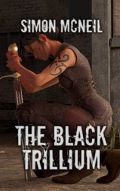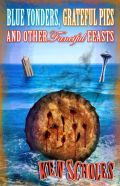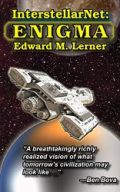The Black Trillium
by Simon McNeil (Brain Lag)
Imagine a post apocalyptic world where swashbuckling meets a good Kung Fu movie meets I Am Legend, in Canada.
I hesitate to call this book Sword and Sorcery since the “magic” is more of the kind you’d find in a martial arts movie. What I will call it is entertaining. There were enough twists and turns to make it worth the investment. Lots of intrigue and great characters and world-building kept me coming back for more. It’s a multi-POV book, but starts and ends with a strong female protagonist who breaks out of her circumstances and takes control of her life without losing what makes her a woman. Swordplay AND nurturing were her strengths, which was very refreshing.
Yet I’d buy the book for the cover alone. It’s also that good.
And if they do not eventually make a video game out of this adventure, the world is missing out on a great thing.
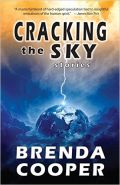
Cracking the Sky
by Brenda Cooper (Fairwood Press)
Stunning collection. It’s set up in sections: “Future Earth,” “Space,” “Stories From Freemont’s Children,” “Short and to the point,” and “Military Science Fiction.”
Every last one of the stories in “Future Earth” is amazing. It’s hard to choose a “best of,” but I would have to say I’d lay money on “Savant’s Songs,” the tale of an elderly female physicist who tries to reach another dimension. The section also has a stories of a young girl whose guardians are robots, a researcher who rides the soul of another person in the Third World and realizes the complexity of poverty, an odd take on a possible outcome of the war on drugs, a story about sea aquaculture community living though a sea-quake with the help of semi-domesticated whales, a tale of whether or not to join an off-the-grid but high-tech alternative community with an agenda, and perhaps the most introspective piece of all: a young man who changes so drastically due to technology that he does not realize he’s become what his father foretold.
The section labeled “Space” has three finely-crafted tales: one of love across interplanetary distances, one of twins making a breakthrough in communicating with AIs, and one (co-authored with Larry Niven) about the perils of bioengineered life on the Pluto/Charon pair, changing as they were nudged closer to the center of the solar system.
“Stories from Freemont’s Children” is two tales of youngsters on a world called Freemont. There is some interesting world-building here. The first story is about dealing with the indigenous animals so they can survive. The second is about choosing genetic modifications to make life there easier: you choose as a child and you only get one mod. Which one, and why?
“Short and to the Point” is seven flash fiction stories; a very difficult length to write well, and Cooper is superb at it. I’d read the first sad and lovely tale of sensory memories of a dead river when reviewing the anthology River. “Tea with Jillian” is about an unexpected upgrade to an elderly woman’s robot companion. “For the Love of Mechanical Minds” is about a child who always wanted to be an AI and did the next best thing (and whatever you guessed that thing is, you’re wrong). “Entropy and Emergence” is all about a man in a hospice who has “birthed” an AI. Will his legacy be to let it live? Programmers always leave a back door . . . .
The flash-length “Alien Graveyards” is not about a place for dead bodies, but rather a place for living memories. “A Hand and Honor” is about a contest between enhanced and non-enhanced human athletes, but really more about what makes us human. “Mind Expeditions” was about virtual policing and security, its limits and benefits and horrors–all folded into an anecdote on Career Day, at a school.
The book ends with a two stories of “Military Science Fiction.” “For the Love of Metal Dogs” tells the story of a handler for a robotic military dog teamed with a handler for a flesh-and-bone military dog. The canines’ inherent strengths and weaknesses turn out to be . . . complimentary. The story that the collection named for is the last one, “Cracking the Sky” – a bit of military SF that’s as dramatic as it is intriguing.
RECOMMENDED
Blue Yonders, Grateful Pies, and Other Fanciful Feasts
by Ken Scholes (Fairwood Press)
Lordy, lordy, lordy. With warmth, humor, and Pacific Northwest roots, this quirky collection of stories by Ken Scholes is bound to please. For humor there is a zombie trailer park story: “A World Done in by Great Granny’s Grateful Pie.” Then there’s a tale so full of Easter eggs it might have been written by the Cadbury Bunny: “Jay Lake and the Last Temple of the Monkey King” which involves Jay Lake, Frank Wu and other madcap SF writers. All of these are full of wit, charm and strangeness.
But some of the stories are quite serious. “All Our Tangled Dreams in Disarray” is a story about the mother of one of several Chosen Ones who will change the world if their children are allowed to be born. But what will the children change it into? And does she want to be a part of that change?
“The Starship Mechanic” was about a tech-wizard repairing alien who and can only speak to our narrator. Um, it’s about the alien fixing things, too, and it’s not helpful that the alien does things like use base 17 and its repairs are . . . strange. When it cannot be contained (it “fixes” its way out of confinement) it finds refuge in a science fiction bookstore, where it sort of fits in until “they” come back for it.
For something completely different, “A Chance of Cats and Dogs” is a sci-fantasy about human-looking cats and dogs working out their indentures to be saved from an extra-dimensional threat on their homeworld. Extremely well done, and I hope Scholes does many more stories in this world.
“Annual Dues” is a straight fantasy about paying a demon for the use of its powers. It’s devilishly hard to do, of course, and devils are not trustworthy.
My least favorite story in the collection is “If Dragons Mass Eve Be Cold and Clear.” But then, I have philosophical problems with anyone coming up with an intentionally false religion just to make hopelessness bearable; see the section in Escape From Reason by Francis Schaefer about the concept of something being “below the line of despair” for more information. So I found the story to be well crafted, but painfully depressing.
In contrast, my favorite story of the collection is “A Symmetry of Serpents and Doves.” It is also informed by Scholes’ real-life experience of leaving organized religion but in this case “write what you know” lead to an incredible, fast-paced adventure. “Symmetry” has the sense of wonder a good story should have, chilling stakes, raised to being almost unbearable, and characters I was fully invested it. The final plot-thrust turns in the reader like a knife. But it ends on a hopeful note. You need to read this. It’s amazing.
InterstellarNet (series)
by Edward M. Lerner (Fox Acre Press)
 Origins:
Origins:
The three-book series starts with a signal from a not so distant system in our galaxy.
An e-commerce system between humans and multiple alien cultures (with their own ethics and their own way of doing things) develops, with disruptions to the cultures on both sides of the transactions.
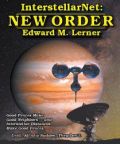 New Order:
New Order:
More civilizations from the local group of stars join the e-commerce game; they are an outside influence to the aliens and humans in the first book. During the first physical contact with a known alien race humans realize something may not be quite right here . . . I don’t want to give way too much here, but it involves new definitions of “Persons” and all the associated legal wrangling.
Interplanetary enemies become allied against a common threat. The threat involves time manipulation and part of the solution is a forced peace between opposing parties. Because of our interaction with the alien cultures and their technologies, there is now augmentation of human beings and changes to human cultural norms. It was all about unexpected solutions to runaway technologies.
The series was a well researched hard science fiction series. Building from today’s technology into a believable tale of the not-so-distant future of characters, ships and planets, I really enjoyed it.
– Brian Thies
Of Archangels and Fuzzy Green Mascots
by Joyce Reynolds-Ward
This was my first exposure to the author’s Netwalk series and it left me hungry for more. In summary, an alien artifact called, for lack of a better descriptor ,“Gizmo”, has been threatening earth for over 50 years. Netwalkers are uploaded human personalities, their bodies dead, who maintain the integrity of the virtual sphere from threats, especially Gizmo. They and living humans who can enter the virtual world short of dying are the last line of defense against the various ways warlike Gizmo has been trying to take over the datasphere.
In this novella, Ward paints a virtual and literal minefield where Gizmo’s influence is no longer safely contained and has infected the bio-crystal growing lines in a number of space stations. The humans on a station head it off but only because they have virtual help and a secret weapon that has something to do with an unlikely aid left there by previous people who’ve fought this Gizmo. It sets up the larger conflict in the novel NETWALK’S CHILDREN, which will be coming out in November 2015.

